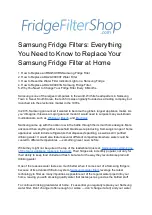
46.03
16398 Rev B Updated 04/2021 © 2021 Victaulic Company. All rights reserved.
5.0 PERFORMANCE (CONTINUED)
CPVC Guidelines
Use of UL Listed CPVC Piping with Specific Application
Attic Sprinklers Wet Systems Only
UL Listed CPVC piping may be used in a combustible
concealed attic space requiring sprinklers when installed
in accordance with the following guidelines. For clarity,
the following guidlines reference both "Gable/Downslope"
areas as well as "Hip" areas. Refer to Figure 1 on page 1
for explanation of these areas.
Notice
Where the use of non-combustible insulation is
specified, verify with the insulation manufacturer as to
the non-combustibility of the insulation. The non-
combustible insulation (fiberglass) may be faced or
unfaced. Where faced, the facing need not be non-
combustible. The insulation is to have a flame spread
index of not more than 25. Verify chemical
compatibility of the insulation with the UL Listed CPVC
by consulting the CPVC Manufacturer's literature.
CPVC At Bottom Chords To Feed Ceiling Sprinklers Below
UL Listed CPVC may be used to feed the wet system
ceiling sprinklers on the floor below when adhering to
the following guidelines: (See Figure 36)
• Wet Systems only
• The area above must be protected by FL-SA/BB, FL-
SA/GAP and/or FL-SA/DS Sprinklers.
• Pipe Running on Top of Bottom Chords: There must
be 6 in. (152.4 mm) of non-combustible insulation
covering the horizontal or vertical pipe extending
12 in. (304.8 mm) on each side away from the
centerline of the pipe. Refer to Figure 36A.
• Pipe Running Within Joist Channel: If the pipe is
located inside the ceiling joist, the joist channel
must be covered or filled with 6 in. (152.4 mm)
of non-combustible insulation on top of the pipe.
Refer to Figure 36B. Insulation is for fire protection
purposes. It is not freeze protection. CPVC
must be installed in accordance with the CPVC
Manufacturer's installation guide instructions.
FIGURE 36A
FIGURE 36B
FIGURE 36: NON-COMBUSTIBLE INSULATION FOR THE PROTECTION OF CPVC PIPE
30




































